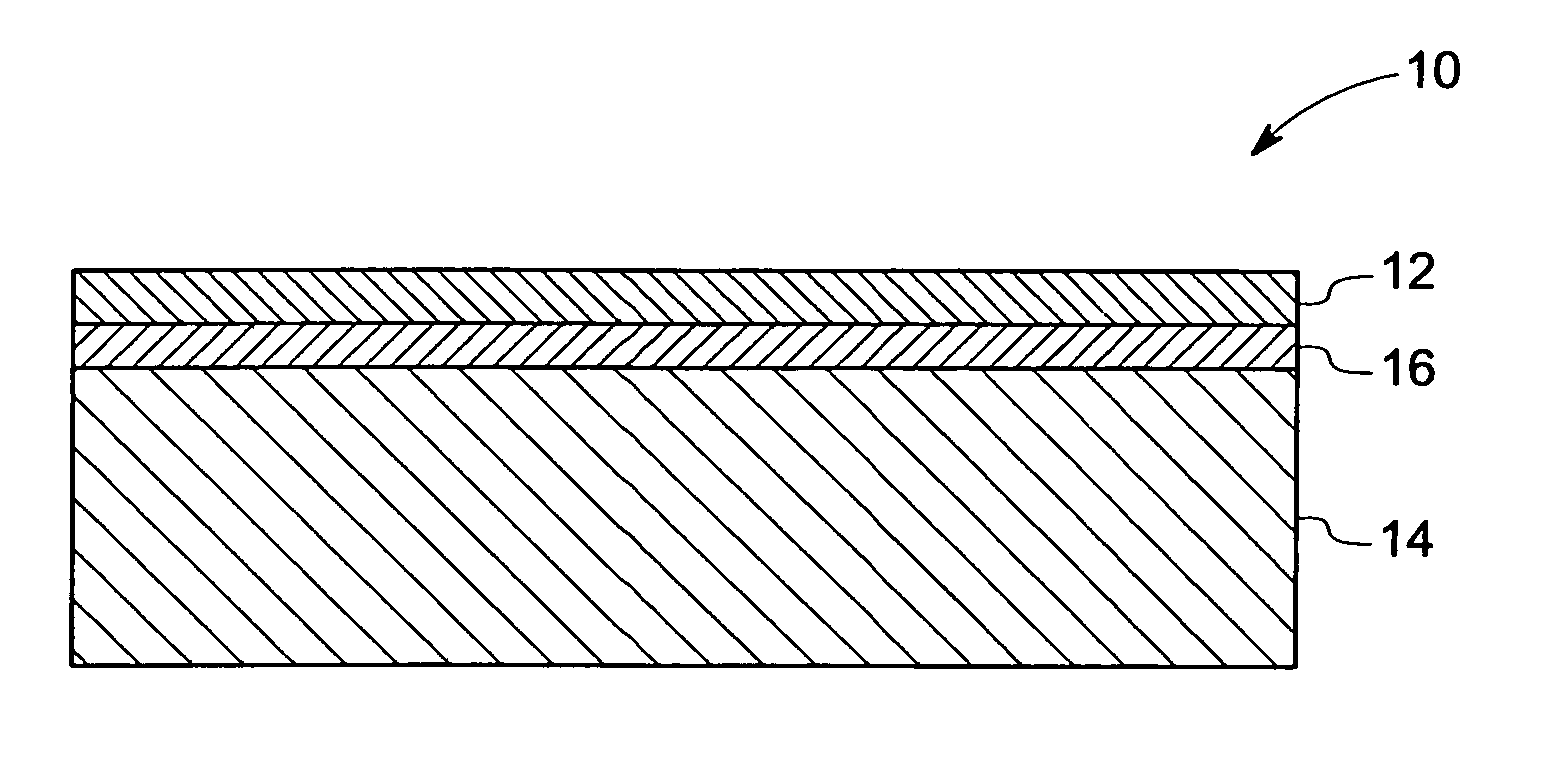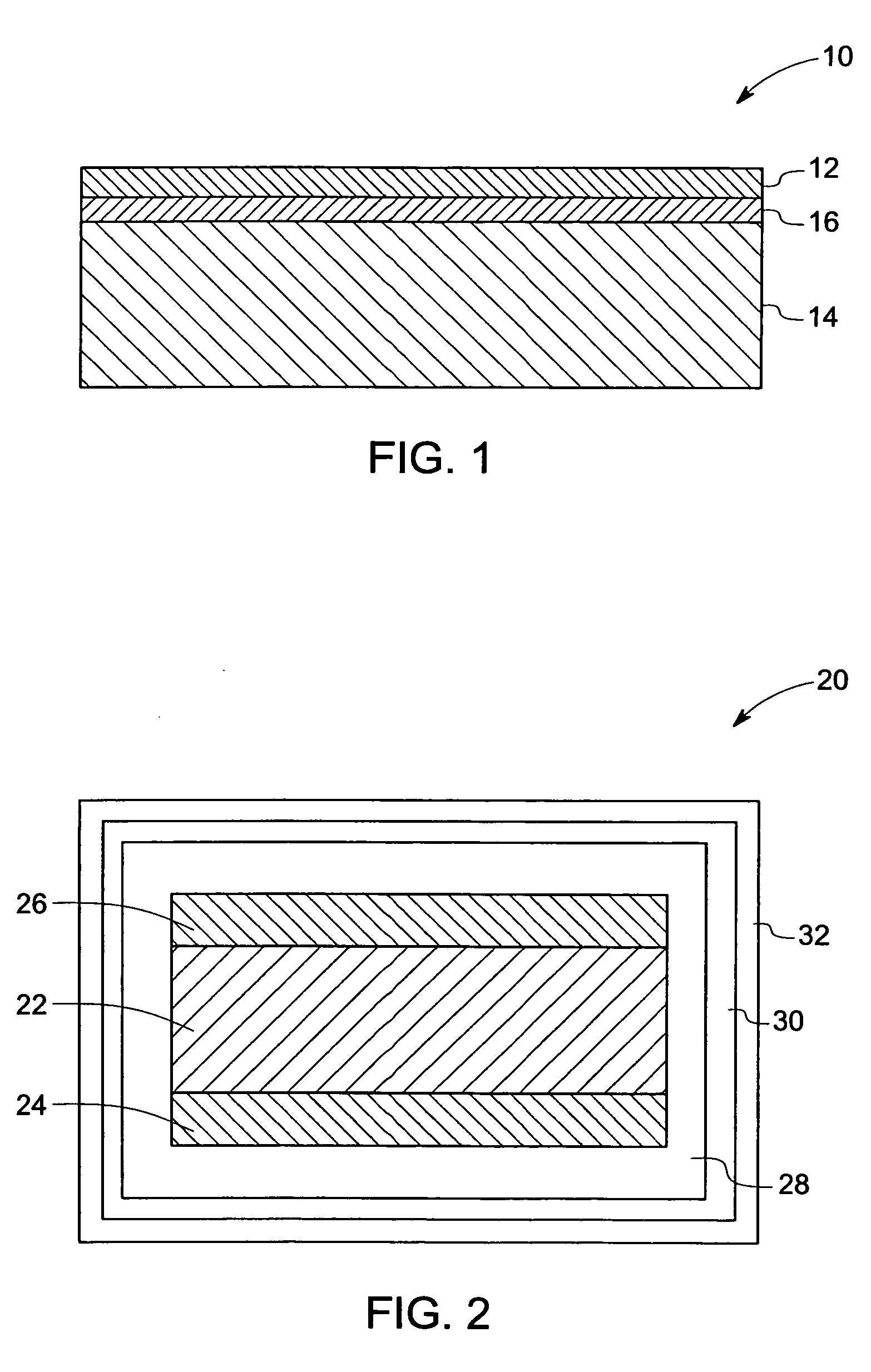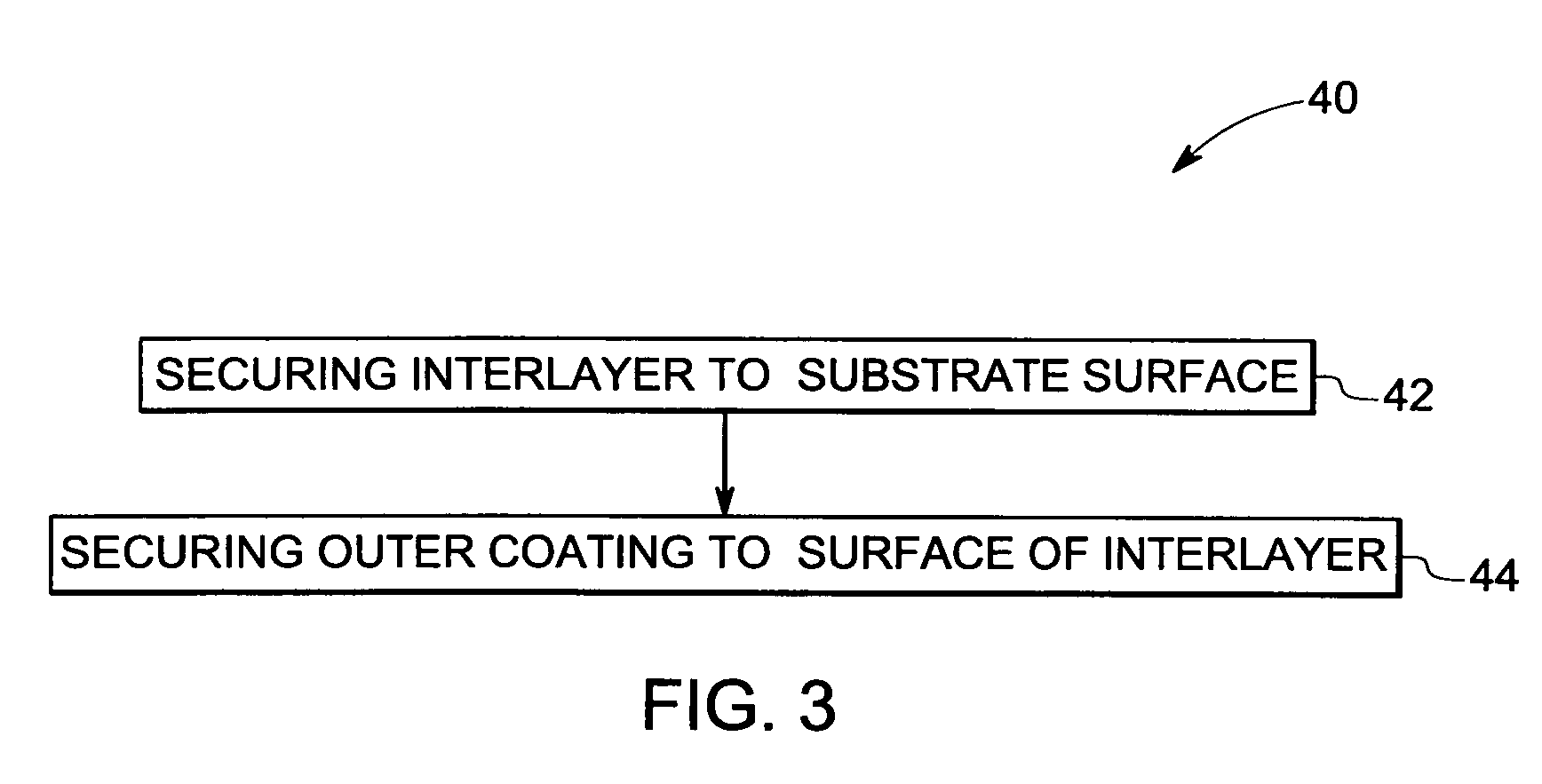Coating structure and method
a coating structure and coating technology, applied in the field of coating structure, can solve the problems of limiting the life of components and equipment, and achieve the effect of prolonging the life of articles
- Summary
- Abstract
- Description
- Claims
- Application Information
AI Technical Summary
Benefits of technology
Problems solved by technology
Method used
Image
Examples
example 1
Etch Rate Measurements of Glass Samples
[0048] Five samples are prepared from alumino-silicate glasses with differing concentrations of rare earth metal oxides / transition metal oxide. A stoichiometric amount of aluminum oxide, silicon oxide, and rare earth oxide / transition metal oxide are fused into a layer. No top coat is provided to allow testing of the interlayer etch rate.
[0049] The etch rate of the samples is measured after fluorine reactive ion etching. Table 1 shows the etch rate of Samples 1-5 as measured by gravimetry. Gravimetry involves measuring the weight change of the samples after fluorine reactive ion etching and considering the sample density and surface area. Fluorine reactive ion etching was carried out with NF3 / Ar ratio of 16 / 34 standard cubic centimeters per minute (sccm), chamber pressure of 100 mTorr, at 400 watts for 300 minutes.
TABLE 1Etch rate of Samples 1-5Composition (wt %)Etch rateSampleAl2O3SiO2Y2O3CeO2Gd2O3(Å / min)120.135.444.5——2.6215.827.9——56.30.9...
example 2
Etch Rate Measurements of Rare-Earth Oxide and Transition Metal Oxide Bulk Samples
[0050] Samples 6-10 include metal oxide pellets. The metal oxide pellets are prepared by compacting and sintering of the indicated metal oxide powders. Fluorine reactive ion etching was carried out with NF3 / Ar ratio of 16 / 34 standard cubic centimeter per minute (sccm), chamber pressure of 100 mTorr, at 400 watts for 300 minutes.
[0051] The etch rate of Samples 6-10 is measured after fluorine reactive ion etching. Table 2 shows the etch rate of bulk samples 6-10 as measured by gravimetry. Gravimetry involves measuring the weight change of the samples after fluorine reactive ion etching and considering the sample density and surface area.
TABLE 2Etch rate of bulk samplesSampleCompositionEtch rate (Å / min)6Y2O30.0 ± 0.47Al2O33.1 ± 0.48HfO29.1 ± 0.29CeO2−0.3 ± 0.3 10 Gd2O3−0.6 ± 0.3
example 3
Etch Rate Measurements of Metal Oxide Coatings
[0052] Metal oxide coatings are prepared on clean substrates of quartz by sputtering. The conditions of the preparation include the sputtering environment, the flow rate, and the power requirements. The sputtering is carried out in 7% oxygen (balance argon) at 10 microns pressure and 65 cubic centimeters per minute flow rate. Radiofrequency power is 400 watts and 950 volts.
[0053] The thickness of the resulting coating is 350 nanometers plus or minus 150 nanometers. Once prepared, Samples 11-13 are etched. Fluorine reactive ion etching is carried out with NF3 / Ar ratio of 16 / 34 standard cubic centimeter per minute (sccm), and a chamber pressure of 100 mTorr at 400 watts for 300 minutes.
[0054] The etch rate is determined by profilometry comparison. Profilometry involves providing a shallow mask on the sample. The height of the step is measured before fluorine reactive ion etching, and again afterward. The height differential is calculate...
PUM
| Property | Measurement | Unit |
|---|---|---|
| Percent by mass | aaaaa | aaaaa |
| Percent by mass | aaaaa | aaaaa |
| Thickness | aaaaa | aaaaa |
Abstract
Description
Claims
Application Information
 Login to View More
Login to View More - R&D
- Intellectual Property
- Life Sciences
- Materials
- Tech Scout
- Unparalleled Data Quality
- Higher Quality Content
- 60% Fewer Hallucinations
Browse by: Latest US Patents, China's latest patents, Technical Efficacy Thesaurus, Application Domain, Technology Topic, Popular Technical Reports.
© 2025 PatSnap. All rights reserved.Legal|Privacy policy|Modern Slavery Act Transparency Statement|Sitemap|About US| Contact US: help@patsnap.com



